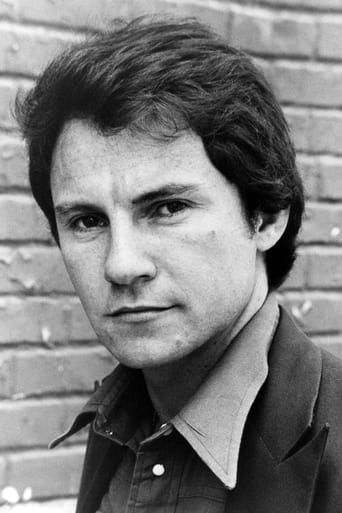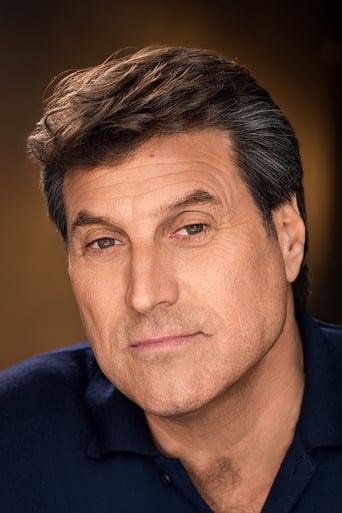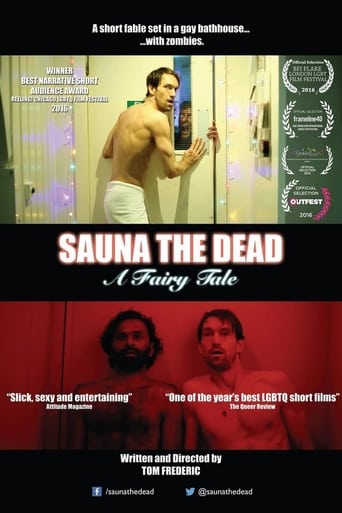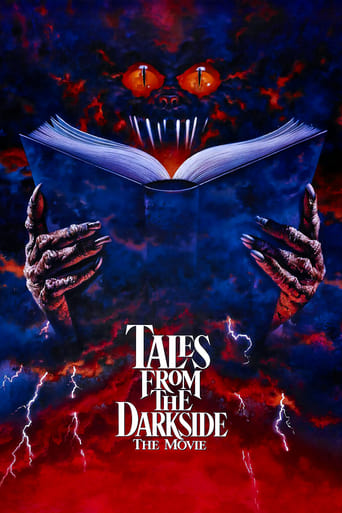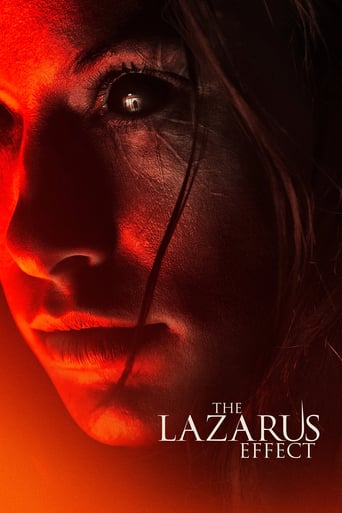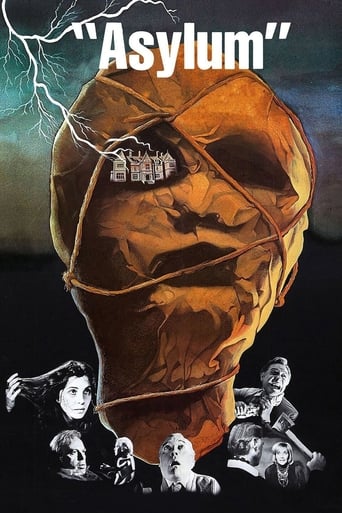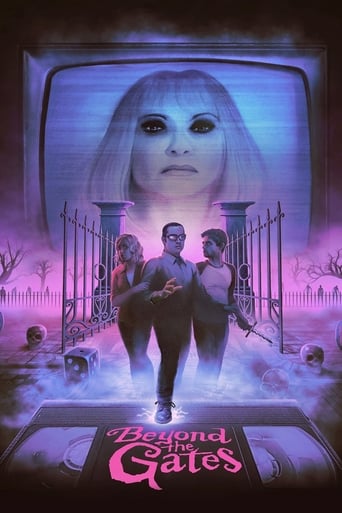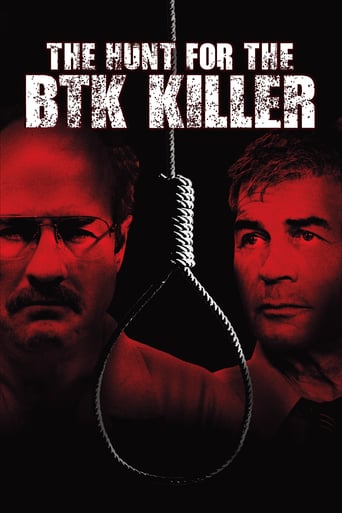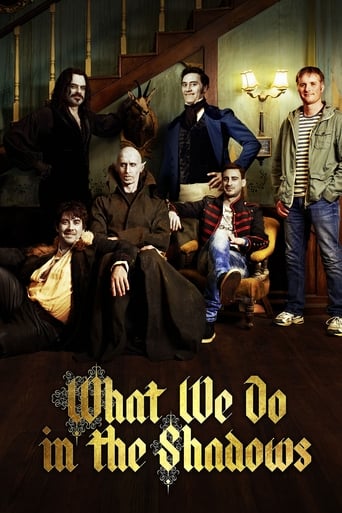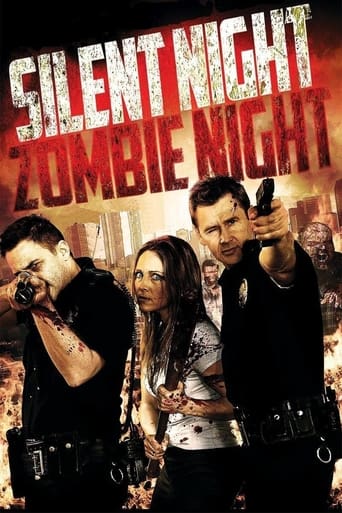
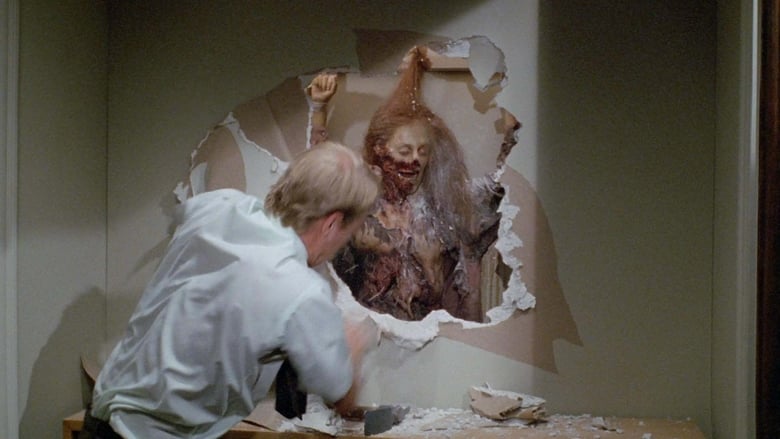
Two Evil Eyes (1991)
A duo of Edgar Allan Poe adaptations about a greedy wife's attempt to embezzle her dying husband's fortune, and a sleazy reporter's adoption of a strange black cat.
Watch Trailer
Cast


Similar titles
Reviews
"Two Evil Eyes" is a compilation of two horror shorts that take different approaches to two familiar ideas, without the greatest of results.The first segment, directed by George A. Romero, is the old "evil people kill guy, dead guy comes back for revenge, the end" story he did in one of the Creepshow movies. It also featured in a "Tales From the Crypt" episode about a black mortician.I always found these types of stories annoyingly underdone and unfinished. It's like a start and an end, but no middle. There is never an attempt to explain the hows and whys of the spectral appearance. Not that everything needs an explanation, but these stories just need something more. I find them really lazy.This time, Romero (after "Creepshow") does try for more, but in a weirdly noncommittal manner that doesn't come to anything. When the guy is supposed to be dead, frozen in an ice chest by his gold digging wife and doctor, he apparently speaks to them from beyond the grave about ghosts he has met on the other side. His mouth doesn't move, we just hear the voice. The gold-diggers make sure he's dead with a more forthright execution, and THEN he comes back, muttering something about how the ghosts on the other side are trying to take over his body. I believe he gets put down for a third time, but then spectral shapes circle around the doctor's bed, and it's time for the next short movie.The whole concept of the dead man encountering resistance on the other side, and they are the ones who precipitate his zombification, had promise to create something markedly different than the bog-standard story outline I described above. Romero's heart didn't seem to be in it, though, or perhaps he just wasn't the man for the job. His horrors, whatever they are, are of THIS world, with generally a real world evil either at fault, or as a backdrop. He isn't interested in the world beyond the veil. The dead man communicating to his killers needed to be handled in a much more engaging way than him merely talking without talking. A particularly shocking dream sequence, for example, could have been a better way of communicating the terrifying unreality of someone being dead, but not quite dead enough.The second segment was better, though not by much. The handling wasn't quite as pedestrian, but nevertheless was fairly confusing. Argento's raison d'etre is the giallo genre; ultra-violent murder whodunits with red herrings, multiple suspects, heroes caught on the wrong side of the law. You generally lose track of the finer details of the plot, but this can work as it conveys the depths of the mystery the hero is stuck in. If you're having a hard time with the details, how must they be getting on?For a more straightforward horror story like "The Black Cat", however, it's more of an annoyance that the story doesn't seem anchored to anything; even Keitel's performance is a bit all over the place. The tale of a man apparently driven insane by an unkillable black cat, Keitel's typical gory, POV-shot murder of his wife (this is Argento, after all) didn't feel necessary to the story, of explicable based on what came before. After that we descend into the usual clichés of a man trying to cover up murder while neighbours and students call his house. He didn't seem crazy enough. The detail of the cat having a patch of fur in the shape of a gallows is the kind of literary point that only works on paper - like the dead guy talking without moving his mouth in the first story. The filmmakers needed to find better cinematic ways of showing these things, and showing how these things affected the characters.Without the stories on hand, the effect was really any one's guess, but I can only assume we would've got it if we'd read, rather than watched them.
On the surface, this would seem like a horror fan's wet dream. Two of horror's most celebrated directors, George Romero and Dario Argento, in a pseudo-anthology film, dedicated to the works of American legend, E.A. Poe. The reality, however, is that the film has its' shining moments, but the negatives outweighed the positives for me.Most of us have some passing familiarity with Poe's work, maybe you've read it in grade school, or maybe you're more familiar with the Corman adaptations from the 60s. He is considered to be the father of American horror, as well as the inventor of the detective story. His work has been used as a launching point for many horror films and here they attempt to adapt his work somewhat faithfully, though with plenty of additions and embellishments. The stories were originally created for a proposed television series. Unfortunately it was abandoned with only two episodes and, thus, we get the two one-hour segments shown here. The fact that they were created for the small screen is one of the biggest drawbacks to the film. Romero's segment, especially, just reeks of low budget and bad production values. The first story is THE FACTS IN THE CASE OF M VALDEMAR done by Romero. It utilizes some of the weakest parts of the Poe oeuvre, in my opinion. It's very indicative of the sort of "detective fiction" that was crafted by Poe letting a plot VERY slowly unwind and, also, shows his preoccupation with the mysticism and hypnotism so popular at the time. The problem is that all the tension that he tries to build just goes nowhere and never provides a satisfying resolution. Maybe I'm just too jaded, but a guy laying frozen with a disembodied voice just doesn't elicit many chills for me. Of course, being Romero, he uses the story as an excuse to comment on capitalism and drag out one of his trademark zombies. The second story is THE BLACK CAT by Argento, which is really a strange melange of several Poe stories, including THE CASK OF AMONTIDALLO. It stars Harvey Keitel a few years before his Tarantino-fueled resurgence. The story has a few of the best elements of Argento's work, including some gorgeous looking crime scenes. Unfortunately, it has some of the worst elements of his work, as well, namely an odd, meandering plot and a bad male lead character that is hard for anyone to relate to because I've never met one person who acted remotely like him. Both directors were about five years past their prime, at this point, and do a serviceable job of translating stories that are now over a hundred years old, to make them more modern. I found the Argento segment to be much better than the Romero, but neither one would even have made a very good episode of TALES FROM THE CRYPT, let alone an entertaining horror film.
It's always tricky to evaluate a filmmaker when at work on a film that is in an in-between realm of short and feature. Actually, by technical ruling (or what would be considered by most festivals), it is feature-length with each segment. But I found Two Evil Eyes an underrated effort, after reading many mixed reviews (many leaning to the lesser side for especially Romero's film, and some faint praise for Argento's). The Facts in the Case of Mr. Valdemar and The Black Cat are not the tippy-toppest best for either filmmaker, and for Romero it's a strange kind of quasi-conventional experiment while Argento stays in somewhat familiar territory. Each has its own strengths, own weaknesses, and it's a fine little treat.'Valdemar': This starts with the veneer of what comes in the range of something like a cross between daytime Soap and a 40s melodrama. A woman (Adrienne Barbeau) married Mr. Valdemar late in life, and as he's about to die (and soon does) she stands to collect a load of money with her cuckold- a smooth operating doctor who has a knack for hypnosis.What unfolds after his death, and their cover-up in order to secure more funds, is something still like a 'living-dead' movie for the director, but more psychological in head-games and, to be sure, a faithfulness to the Poe source. It is a peculiar feat to adjust to in seeing Romero, at least in the first half hour, directing more like an old pro of the studio era than with his trademark panache in editing and shocks.This time he brings on the dread in a gradual fashion, built on guilt and paranoia, and then as Valdemar is in that freezer, a Gothic form of psychosis: two people stuck with a body, and a voice, they can't get rid of and become absorbed with. I liked it a lot- maybe more than I should have from what I read (the 'Soap' argument against it I read before, though Romero does try to give his actors more to work with than any hack would)- as it preys on the fear of death as not a final measure, with one last wicked kick in the nuts with that bed scene. Top shelf Romero? Not quite, but it's still oddly gripping, like a polished piece of clichés giving way to a wild head game of "old-school" horror.8/10 'Black Cat': Argento's dip in the Poe pool goes to the lengths that he as a director always goes to: elaborate-to-the-Italian-horror degree style in camera and deranged horror, and even bits of dark horror that almost make Poe seem tame. I can't say how much this is tied into Poe more than I can Valdemar, but try as I might I couldn't see this as being totally peak Argento either, despite (or almost in spite of) everything he has going for it. Like Valdemar, it's about someone not coping with life after death; a photographer (Keitel) into the macabre, with a (color me shocked Argento) violinist girlfriend, has a black cat, whom the photographer strangles while taking some provocative photos. She knows he's behind it, but he can't stop himself- he needs another cat- just like the old cat- which will meet some grisly consequences.Keitel's always game for something like this part, which plays like his Bad Lieutenant gone Grand Guignol, which makes for one of the best pleasures of the project. He doesn't have a whole lot of range in the role, but it's a fun one for him, chewing on the meat that Argento throws out for him scene after scene. Argento, meanwhile, even for *him* overdoes it with the horror music in certain scenes, and dares to go to too much excess with the symbolism of the white spots on the cat. But it's totally a wonder to see that dream sequence, where Keitel is in the midst of a medieval Pagan sacrifice, with a sharp cut-away in the most violent bit. And I loved the pleasure that Argento takes in enlivening Poe's macabre with his own, with the violence extending from mania into the visual. I had my complaints at times, but it's hard to not throw up one's hands with Argento and say "why carp!" when he's unabashed in his passions of mostly constant camera movement (tracking, cranes, close-ups, pans, you-name-it) and illogical steps in plot (i.e. why Keitel's character would even put out a book with cat deaths knowing his girlfriend might see them, let alone so soon). 8/10 Bottom line, fans of the directors should check out the films, and decide for themselves how they do. It's two tall tales of curses and death, derangement and the surreal, and it's a concoction worth at least one viewing.
Two adaptations of Edgar Allen Poe's dark tales. Two famed directors and recognizable stars. I was real eager to view TWO EVIL EYES, but it didn't take all that long and I was bored to death. Not enough action; not enough gore. George Romero directs THE FACTS IN THE CASE OF M. VALDEMAR, where a deceitful cheating wife(Adrienne Barbeau)plans on killing her husband(E.G. Marshall); and while he is in a vegetated state, she cashes in some of his major assets. Even a fully clothed Barbeau is gorgeous.THE BLACK CAT is directed by Derio Argento and tells the tale of a crime photographer(Harvey Keitel), who is haunted by cats after himself being involved with a murder. Keitel,who is known for playing some quirky roles, does not disappoint.Other stars involved in these twin tales: Sally Kirland, John Amos, Kim Hunter, Martin Balsam and Ramy Zada.



